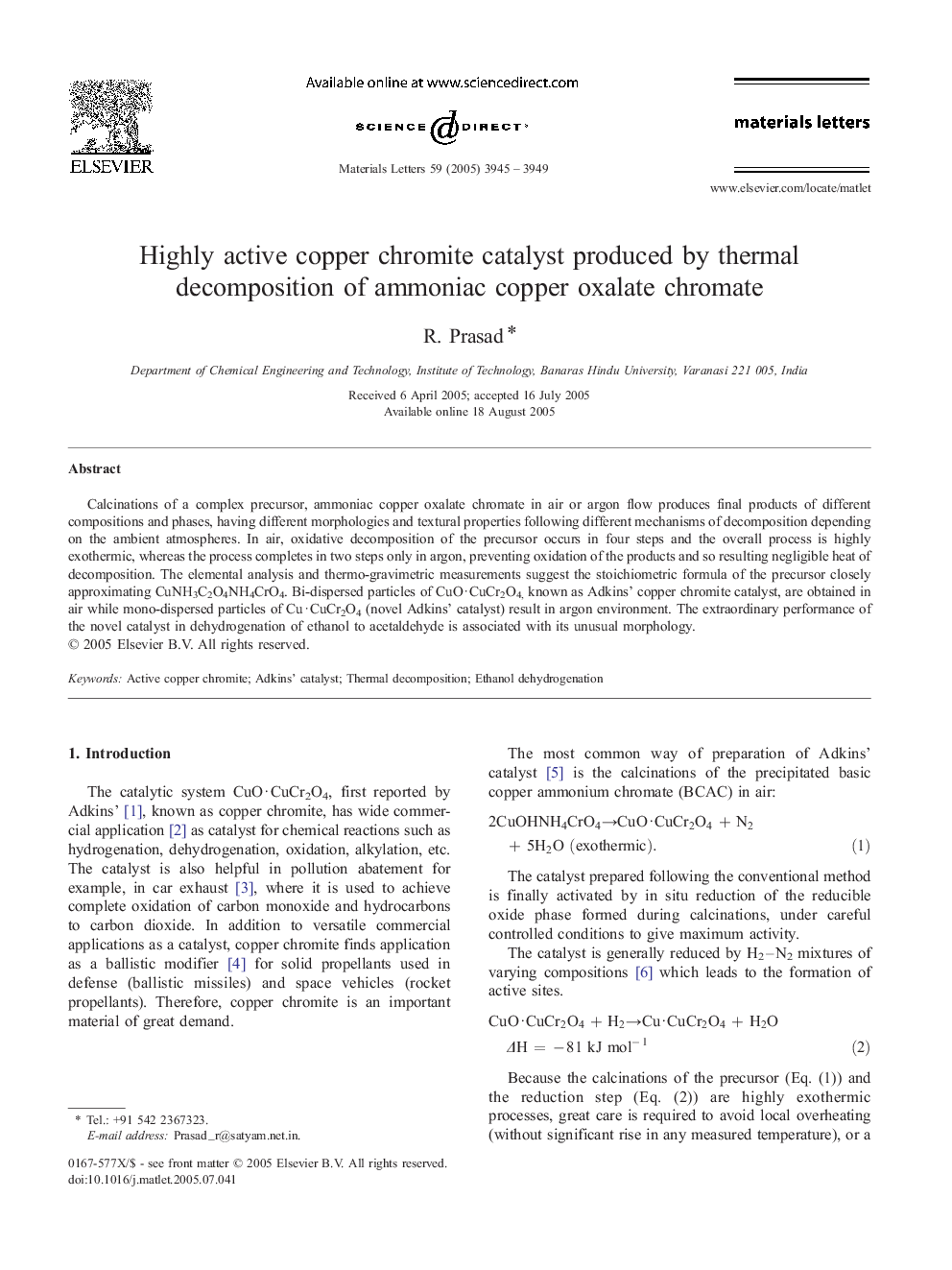| Article ID | Journal | Published Year | Pages | File Type |
|---|---|---|---|---|
| 1654717 | Materials Letters | 2005 | 5 Pages |
Calcinations of a complex precursor, ammoniac copper oxalate chromate in air or argon flow produces final products of different compositions and phases, having different morphologies and textural properties following different mechanisms of decomposition depending on the ambient atmospheres. In air, oxidative decomposition of the precursor occurs in four steps and the overall process is highly exothermic, whereas the process completes in two steps only in argon, preventing oxidation of the products and so resulting negligible heat of decomposition. The elemental analysis and thermo-gravimetric measurements suggest the stoichiometric formula of the precursor closely approximating CuNH3C2O4NH4CrO4. Bi-dispersed particles of CuO · CuCr2O4, known as Adkins' copper chromite catalyst, are obtained in air while mono-dispersed particles of Cu · CuCr2O4 (novel Adkins' catalyst) result in argon environment. The extraordinary performance of the novel catalyst in dehydrogenation of ethanol to acetaldehyde is associated with its unusual morphology.
